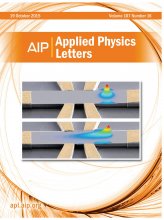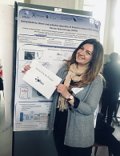4 June 2019
Langmuir (ACS) publication
Le groupe ECM vient de publier dans Langmuir (ACS) un article intitulé « Structure of mixed acid/decyl monolayers grafted on oxide free Si(111) surfaces ».
Cet article, issu de la thèse de (...)
Home > News

The electric field-induced modifications of the spatial distribution of photoelectrons, photoholes, and electronic spins in optically pumped p + GaAs are investigated using a polarized luminescence imaging microscopy. At low pump intensity, application of an electric field reveals the tail of charge and spin density of drifting electrons. These tails disappear when the pump intensity is increased since a slight differential drift of photoelectrons and photoholes causes the buildup of a strong internal electric field. Spatial separation of photoholes and photoelectrons is very weak so that photoholes drift in the same direction as photoelectrons, thus exhibiting a negative effective mobility. In contrast, for a zero electric field, no significant ambipolar diffusive effects are found in the same sample.
Plus d’information
4 June 2019
Le groupe ECM vient de publier dans Langmuir (ACS) un article intitulé « Structure of mixed acid/decyl monolayers grafted on oxide free Si(111) surfaces ».
Cet article, issu de la thèse de (...)
4 June 2019
Le groupe ECM a récemment publié dans ACS Catalysis un article intitulé « Operando Surface X-ray Diffraction Studies of Structurally-defined Co3O4 and CoOOH Thin Films during Oxygen Evolution”. (...)

10 April 2019
C’est en décembre 2017 que Cassiana Andrei, doctorante au Laboratoire PMC, a reçu le « prix poster » du pôle Matériaux Innovants et Applications lors de la journée de l’Ecole doctorale (...)
11 March 2019
The electrical resistance of a commercial silicon wafer has been shown to exhibit giant changes when mechanically stressed. The ability to change silicon’s electrical resistance with stress, an (...)
18 February 2019
Par Tristan Vey
La diversité et la complexité des flocons de neige fascinent depuis longtemps les physiciens qui n’ont pas encore levé tous les mystères de leur formation. La neige qui tombe (...)
Page(s) : <